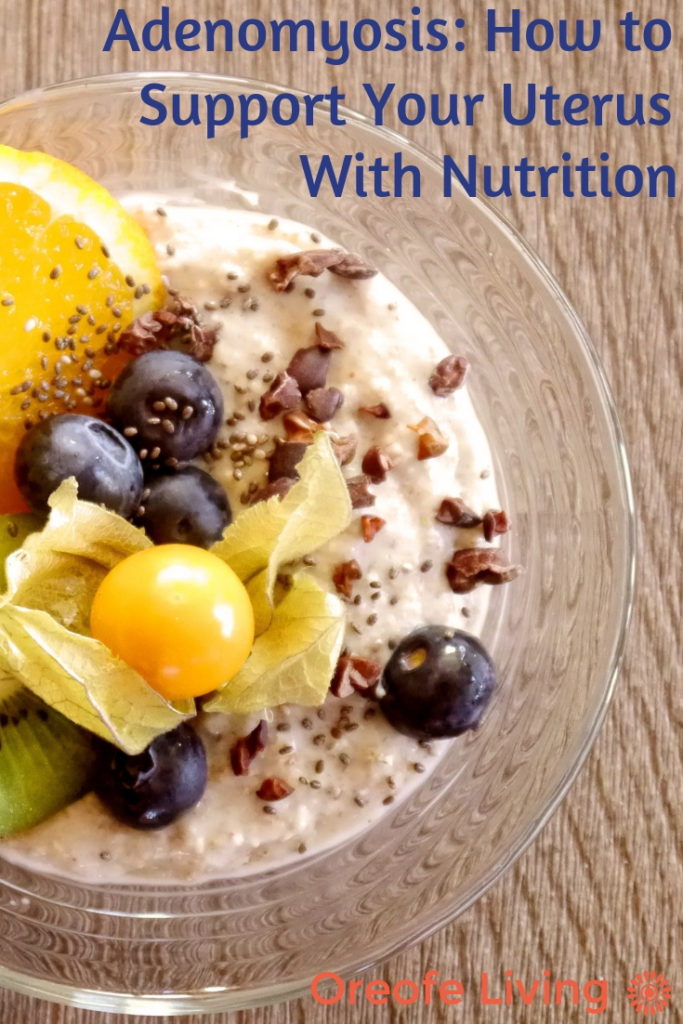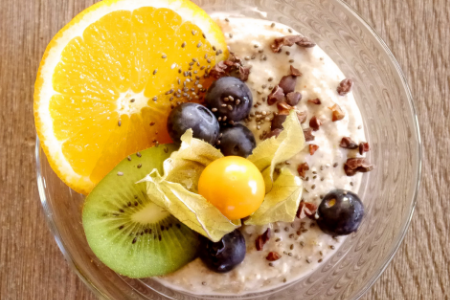Adenomyosis is a condition very similar to endometriosis. However, instead of endometrial tissue developing outside of the uterus, adenomyosis manifests as abnormal tissue growth inside the muscular wall of the uterus. The abnormal growth thickens and hardens the uterus. The condition, due to the hyper-stimulation of endometrial cells during menstruation, causes painful bowel movements, bleeding in between periods, painful periods, severe cramping, chronic pelvic pain, and heavy bleeding. If the condition is left untreated, infertility may result.

Although the cause of the disease is unknown, adenomyosis is often associated with estrogen dominance. Estrogen dominance is a phenomenon that describes the excess of estrogens, especially xenoestrogens, in the environment. Overtime, the excess levels of estrogens in our bodies encourage adenomyosis to worsen.
Adenomyosis is usually diagnosed in women in their 40s and 50s. Currently, there is no cure. However, the condition usually resolves on its own when a woman enters menopause. Many women have been told that the only cure to adenomyosis is a hysterectomy. However, the condition can be managed with good nutrition and other healthy living practices.
Foods to Avoid
Eliminating foods containing unhealthy levels of estrogen is an great way to start reducing or eliminating symptoms associated with adenomyosis. An adenomyosis diet should exclude:
– processed meats
– red meat
– saturated and trans fats
– refined oils
– alcohol
– gluten
– soy
– dairy
– refined sugar
– salt
Many of these foods promote inflammation in the body or negatively influence hormonal balance. Inflammation occurs when the body releases mediators of immune response to sites of injury and infection. The mechanism is a reaction that takes place in order for damaged tissue to heal and repair itself.
Foods to Eat Regularly
Many people who have adenomyosis, endometriosis, fibroids, and polycystic ovarian syndrome (PCOS) talk about how eating right can immensely improve their symptoms. The truth is, nutrition strongly correlates with a woman’s quality of life. A well balanced, plant-based diet contains vitamins and minerals that strengthen the organ systems. Plants foods also contain antioxidants and other anti-inflammatory substances that fight off disease and decrease a woman’s risk of cancer and heart disease. An adenomyosis diet should include:
– berries like blueberries and raspberries
– cruciferous vegetables like broccoli and arugula
– omega-3 rich foods like chia, hemp, and flax seeds
– dark leafy green vegetables
– vitamin B rich foods like millet, sunflower seeds, and beans
– fibrous foods
– plenty of purified water
Consuming a wide range of plant-based foods should be a top priority. Not all foods are created equally, so consuming a good variety of colors and textures daily will ensure adequate amounts of nearly all essential nutrients.
Importance of Quality
The quality of foods you choose to consume is also very important. It is essential that you consider the conditions in which your food is grown to avoid the xenoestrogens typically found in herbicides and pesticides. Whenever possible, choose foods that are organically grown to reduce exposure to harmful chemicals. Thoroughly wash vegetables to remove any unnecessary residue before enjoying.
Fresh foods contain the highest amounts of nutrients. Cook with fresh foods as much as possible. Also, eating fresh vegetables and fruits raw daily can add to the benefits as some foods contain more enzymes and proteins in their raw states.
Some doctors are uncertain if certain foods cause adenomyosis. However, many women have found relief from their symptoms by eliminating certain foods from their diet. Eliminate highly allergenic foods such as peanuts, soy, dairy, gluten and eggs from the diet for at least a month. Once you notice improvements, gradually add these foods back into the diet, one at a time. Take note of any negative reactions from reintroducing these foods.
Alternative Therapies
In addition to eating a well-balanced diet, alternative treatments may be helpful in managing symptoms. A unique and specific plan incorporating great foods and some of the following therapies may hasten your healing process.
– Acupuncture
– Yoga
– herbal teas like cramp bark and raspberry leaf tea
– abdominal massages with essential oils
– regular exercise

